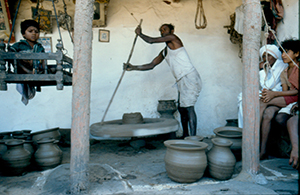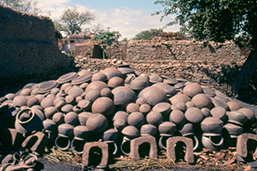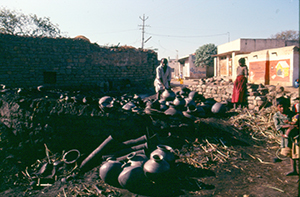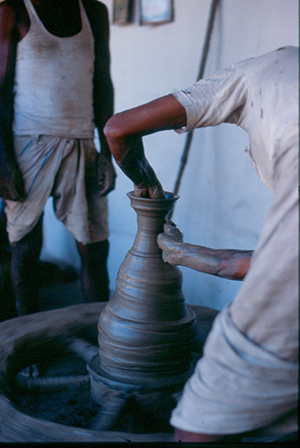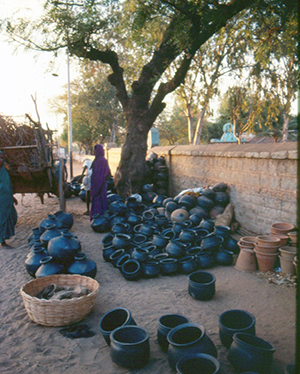Maxwell Museum Blog
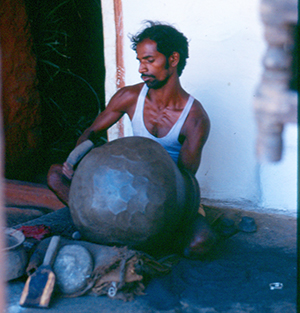
Much of the research of Maxwell Director Carla Sinopoli has focused on the study of craft production and craft producers in Iron Age through Medieval periods in Southern India, particularly pottery. When Carla first worked to India in the 1980s, potters continued to make vessels for domestic use in villages and towns throughout her research area. Today, while earthenware ceramics are still used for some purposes, plastic water jars and metal cooking pots have largely replaced earthenware vessels and few potters continue to ply the traditional, physically-demanding, and poorly-compensated, craft.
Carla had the privilege of spending time with potters in the villages of Kamalapuram, Venkatapur, and Papanayakanahalli, learning about the craft and the distinctive technology that integrates wheel forming with paddle and anvil shaping. She was particularly interested in examining inter-workshop variation to better understand the variability in similarly formed ceramics from her research site of the nearby imperial capital of Vijayanagara (CE 1350-1565) – where potters in hundreds of household-level workshops made essential cooking, storage and ceremonial ceramics for the more than 250,000 residents who lived in the city. Understanding the technology and materials of contemporary ceramic making provided important insights for studying the archaeological cermaics.
The images below depict the process of pottery making as practiced in the workshop of M. in the village of Kamalapuram in the 1980s.
